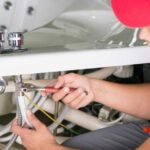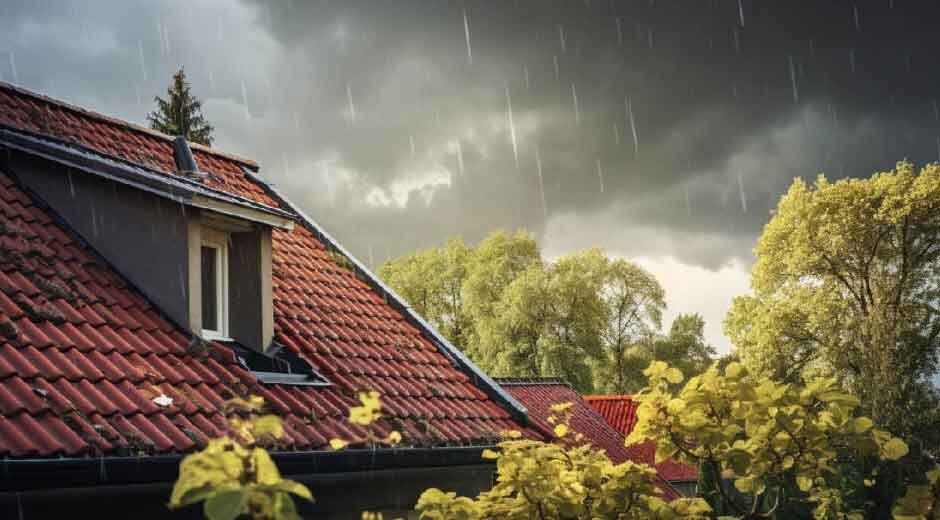Unpredictable weather can turn routine conditions into costly headaches when your home is not properly prepared. High winds, torrential rain, sweltering heat and freezing temperatures all put pressure on your roofing, siding, foundation and outdoor spaces. Weatherproofing is the process of sealing, shielding and reinforcing each vulnerable component of your property to reduce maintenance and extend service life. By approaching this task in manageable steps, you can protect your investment and keep family members comfortable through every season.
Inspecting Your Roof and Gutters
Your roof and gutters form the first defense against water intrusion. Begin with a visual survey from the ground using binoculars to spot missing shingles or cracks in roof vents. Climb a secure ladder or hire a professional to examine flashing around chimneys, valleys and soffits for gaps that let moisture in. Clean out leaves and debris from gutters and downspouts so water flows freely away from the foundation. Consider installing gutter guards to reduce blockages and attach downspout extensions to direct runoff at least six feet from exterior walls. A well maintained roof and drainage system will prevent leaks, ice dams and costly structural damage.
Strengthening Windows and Doors
Air leaks around windows and doors account for a large portion of heat loss in winter and heat gain in summer. Walk the perimeter of each window and door with your hand or a smoke pencil to detect drafts. Remove old caulk and replace it with exterior grade silicone sealant around the frame. Apply weatherstripping under door bottoms and along jambs using adhesive foam tape or V-strip seals. In regions prone to high winds or hail consider storm doors and double or triple pane windows for improved insulation and impact resistance. Proper sealing enhances comfort, reduces energy bills and deters pests from entering through small openings.
Protecting Exterior Walls and Siding
Your home’s siding shields the structure from wind driven rain, UV exposure and temperature swings. Quality materials and expert installation are essential for lasting protection. If you live in Colorado, for example, consider hiring a James Hardie siding contractor in Denver to install fiber cement panels designed to withstand hail, prolonged sun exposure and freeze-thaw cycles. Pair the siding with a water-resistant house wrap and correctly flashed window openings to prevent moisture intrusion. Routine cleaning and repainting or staining every few years will maintain seal integrity and curb appeal. Investing in durable siding up front reduces the need for mid-life repairs and preserves your home’s value.
Sealing the Foundation and Basement
Water penetrating the foundation or basement can lead to mold, structural shifts and costly repairs. Inspect exterior grade for proper slope so soil falls away from foundation walls. Check for visible cracks or spalling concrete and fill them with hydraulic cement or an approved epoxy sealant. Inside the basement look for damp spots, efflorescence or musty odors that signal hidden leaks. Installing a French drain or a sump pump system with a battery backup provides added security in flood-prone areas. A continuous vapor barrier on basement walls and floors further reduces moisture migration. Securing your foundation safeguards the entire building envelope and prevents interior damage.
Preparing Outdoor Spaces and Landscaping
A weatherproof property extends beyond structural elements to include decks, patios and garden areas. Grade soil so it slopes downward away from your home by at least four inches per foot for the first ten feet. Prune trees and shrubs to keep branches from scraping siding or falling onto the roof in high winds. Apply a water-repellent sealant to wooden decks and fences, and cover or store outdoor furniture indoors during storms. Ensure downspouts discharge onto permeable ground or use decorative splash blocks to prevent soil erosion. Incorporate permeable paving materials or rain gardens to manage stormwater naturally and reduce runoff impact.
Ongoing Maintenance and Inspection
Weatherproofing is not a one-time project but a continuous process. Schedule roof and gutter inspections in spring and fall to catch minor issues early. Check window and door seals annually and replace caulk or weatherstripping as needed. Service sump pumps and test emergency power sources before winter arrives. Keep a maintenance log to track sealant ages, paint cycles and damaged components. Simple tasks like clearing debris from vents, testing flashers and reapplying sealers can add years to your exterior systems. Consistent upkeep preserves performance and guards against unexpected failures.
Conclusion
Weatherproofing transforms your home into a resilient shelter against rain, wind, heat and cold. By inspecting and maintaining your roof, windows, siding, foundation and outdoor spaces, you can reduce repair costs, lower energy bills and enjoy greater year-round comfort. A systematic approach and regular checkups will keep small concerns from becoming major problems. Invest the time and effort now, and you will reap the rewards of a durable, secure property that stands strong through every storm.
















